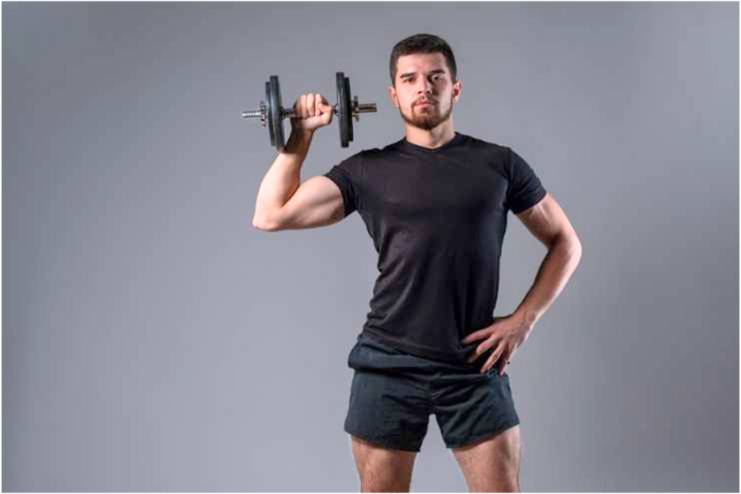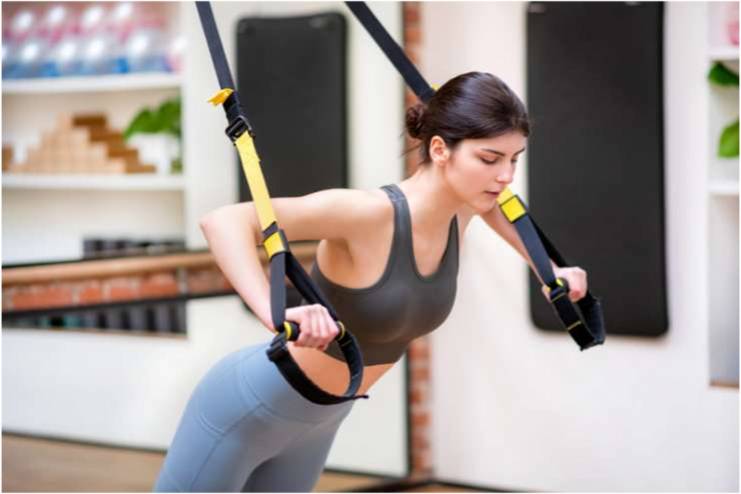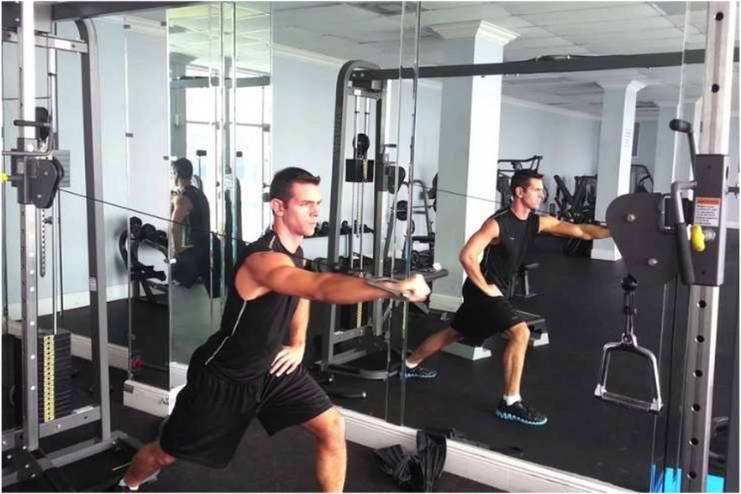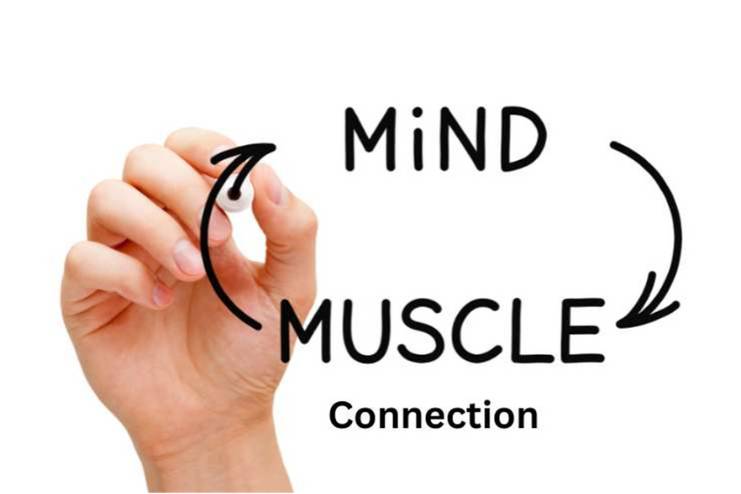Affiliate Disclaimer
Some links in this article are affiliate links. We may earn a small commission if you make a purchase through these links, at no extra cost to you. We only recommend products we find useful to our readersHave you ever thought that your body is more flexible or powerful on one side than the other? You might also be curious why your right arm is more significant than your left. It can indicate an imbalance in the muscles. Chest muscle imbalance occurs frequently. Whether you are an experienced lifter or a total beginner, everyone has them to some extent. It may distort the appearance of your chest muscles and reduce your total strength.
This article discusses practical workouts and methods for resolving muscular imbalance in the chest and enhancing chest symmetry. These easy-to-follow recommendations will help you develop a more balanced and muscular chest, regardless of your fitness level.
Understanding Chest Imbalance

The essence of human movement is reciprocal; to achieve proper movement, opposing muscle groups must coordinate. For normal movement and function to occur, there must be a balance between the length and strength of opposing muscle groups. In most cases, chest imbalance occurs when one side of the chest is more developed or robust.
Muscular dominance, which occurs when the stronger side of the body performs most of the work during workouts, such as bench presses or push-ups, can cause an imbalance in the chest. Because of this, muscle growth may be inconsistent over time. Using improper training techniques and having lousy forms can also contribute to this issue, particularly if you are not concentrating on ensuring that both sides are moving in the same direction.
It is not just a matter of appearance that chest asymmetry has an influence. If you don’t address it, it can disrupt your strength and posture and even cause an accident. Don’t panic, however, because there are ways to correct chest imbalance by performing the appropriate exercises and paying attention to technique. You can work on balancing your chest muscles once you have determined the underlying cause. It will result in a physique that is more symmetrical and stronger.
Also, read: Benefits Of Butterfly Chest Workout- Simple Exercise You Need To Tone Your Upper Body!
Single-Arm Dumbbell Press

The single-arm dumbbell bench press gives the classic dumbbell bench press workout an asymmetrical twist. The dumbbell press is a staple exercise for developing muscle and strength. It requires the user to create even strength and hypertrophy because each hand has its weight.
Isolating each side of your chest with a dumbbell chest press is an excellent way to address imbalances in your chest. As a result, you can concentrate on building up the weaker side, encouraging balanced muscular growth. You can better target weaker areas and improve chest symmetry by working one side at a time.
It would help to begin this workout by working on your weaker side. With a dumbbell in one hand, slowly and deliberately press it upward while lying on a bench. Maintain good form by keeping your movements steady and your core firm. It keeps you from getting hurt and guarantees that your weaker side is working. Including this exercise in your program can help balance any imbalances in strength and greatly enhance chest symmetry.
Resistance Band Chest Fly

The resistance band chest fly is a fantastic workout that can significantly improve strength and flexibility in your chest muscles. The utilization of resistance bands enables the maintenance of an even tension throughout the exercise, contributing to the development of muscular balance. In addition to boosting symmetry and strength, this exercise is also helpful in improving the appearance of any gaps between the two sides of your breast.
Keep a resistance band in each hand and extend your arms out in front of you while applying light strain to the bands. This exercise will help you achieve the desired results. As you slowly pull your arms apart, keep your elbows slightly bent and concentrate on maintaining a consistent level of tension throughout the body action. Remembering to give the weaker side more attention is crucial to keeping the engagement balanced. When you incorporate resistance band chest exercises like this one into your routine, you will improve your flexibility and ensure that your chest muscles work evenly, which will help you attain more excellent overall muscular balance.
Also, read: 8 Doable Dumbbell Chest Exercises Without A Bench To Sculpt Your Upper Body
Unilateral Cable Press

One of the most effective exercises for correcting chest imbalances is the unilateral cable press, which focuses on training each side of the chest separately. Because cable resistance allows you to more effectively isolate and engage each side of your chest, this is a perfect approach for achieving equal muscle strength and size.
Position yourself next to a cable machine and press the handle forward with one arm while maintaining a gradual and controlled pace. You should keep the tension constant throughout every step of motion. ConcentratingConcentrating on your weaker side initially ensures that your muscular development is balanced. It is possible to enhance chest symmetry and strength significantly by using unilateral chest exercises in your training program. One example of such a workout is the cable press, which is excellent for chest imbalance.
Also, read: 24 Effective Ways to Get Rid of Chest Congestion Naturally
Mind-Muscle Connection

Thomas Rutledge, PhD, an associate professor of psychiatry at UC San Diego, explains that recent research has shown that muscles connect directly with the brain, which can ultimately affect mood. In 2003, a research team in Copenhagen discovered that “muscles at work secrete tiny chemical messengers called myokines that exert powerful effects on organ function, including brain function.“
Establishing a solid link between the mind and the muscles is essential for resolving chest imbalances. Concentrating on how your muscles are working during each exercise guarantees that both sides of your chest are recruited equally. This connection enables you to activate the side of your body that is weaker more deliberately, which ultimately results in balanced muscle development over time.
In order to strengthen the link between your mind and your chest muscles, you should slow down your motions and focus on the sensation you feel in your chest muscles while you lift. Visualizing each muscle’s motions can improve your ability to maintain control and ensure that both sides are equally engaged.
Conclusion
An uneven chest is most likely caused by one side of your chest being used more than the other. Consistent hard work and an adjusted exercise program often improve your chest. Anyone can significantly improve chest imbalance by regularly performing these exercises and paying great attention to form.
Over time, better symmetry will result from concentrating on isolating each side and developing a solid mind-muscle link. A well-rounded chest exercise program guarantees that the chest develops on all sides equally, leading to increased strength and a more harmonious appearance.
References
- https://www.gymaholic.co/articles/how-to-correct-muscle-imbalance-tips-for-optimal-symmetry
- https://www.healthline.com/health/uneven-chest#medical-conditions
- https://www.maven-pt.com/maven-stories/how-to-fix-muscle-imbalance
- https://www.mensjournal.com/health-fitness/4-ways-correct-muscle-imbalances
- https://www.healthline.com/health/muscle-imbalance#causes
- https://tonygentilcore.com/2012/08/exercises-you-should-be-doing-1-arm-dumbbell-press/
- https://www.nasm.org/exercise-library/single-arm-dumbbell-chest-press
- https://barbend.com/single-arm-dumbbell-bench-press/
- https://www.fitnessai.com/exercise/band-chest-fly
- https://musclewiki.com/band/male/chest/band-chest-fly
- https://bodylastics.com/exercise/crossover-chest-fly-with-bands/
- https://www.coachweb.com/exercises/chest-exercises/3177/2-unilateral-cable-press
- https://cassybayarea.org/whats-the-mind-muscle-connection/
- https://pubmed.ncbi.nlm.nih.gov/26700744/
- https://pubmed.ncbi.nlm.nih.gov/14609022/






















